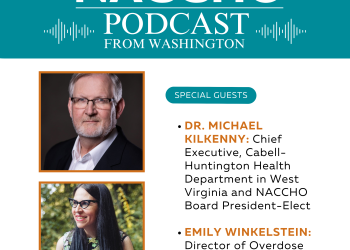The O’Neill Institute for National and Global Health Law released three new documents to support the federal Ending the HIV Epidemic Initiative. The new briefs highlight critical actions to support two pillars of the EHE Initiative: scaling up pre-exposure prophylaxis (PrEP) use and using HIV cluster detection tools to respond to outbreaks more effectively.
Big Ideas: Achieving Sufficient Scale of PrEP Use Is Critical to Ending the HIV Epidemic explains how policy makers need to think differently about PrEP with a greater emphasis on achieving sufficient scale of PrEP use among high-need communities. Citing a modeling study, Crowley and his co-author, Sean E. Bland, O’Neill Institute Senior Associate, report that if 40% of men who have sex with men (MSM) were on PrEP and 62% were highly adherent, it would avert 1 in 3 HIV transmissions over the next decade. The authors state that PrEP programs need to be able to effectively serve a larger volume of clients and need service models that make it easier for users and providers to maintain PrEP engagement.
The EHE Initiative calls for using the right data and tools to end the epidemic, and cluster detection can give insight into how to respond to the epidemic. Cluster detection uses molecular data about the HIV virus reported to health departments by laboratories that conduct drug resistance testing as a part of routine clinical care. Cluster analysis allows public health authorities to spot outbreaks more effectively and to find more people who are part of a cluster, which enables public health authorities to better respond with tailored prevention and care services. Because, in many states, people with HIV can be prosecuted for exposing others to HIV, the use of cluster data raises concerns.
Quick Take: Using Cluster Detection to End the HIV Epidemic is a brief primer that introduces cluster detection and highlights both its promise and risks.
Big Ideas: Policy Action Can Increase Community Support for HIV Cluster Detection is a companion brief that highlights four critical actions where community stakeholders and public health officials can work together to minimize risks associated with cluster detection and broaden support for its use.
Federal and state officials have stated that HIV molecular data collected for public health functions should not be disclosed to law enforcement. A principal recommendation is for community stakeholders and public health officials to work together to enact a number of policy changes to ensure that such data are not disclosed to law enforcement.


